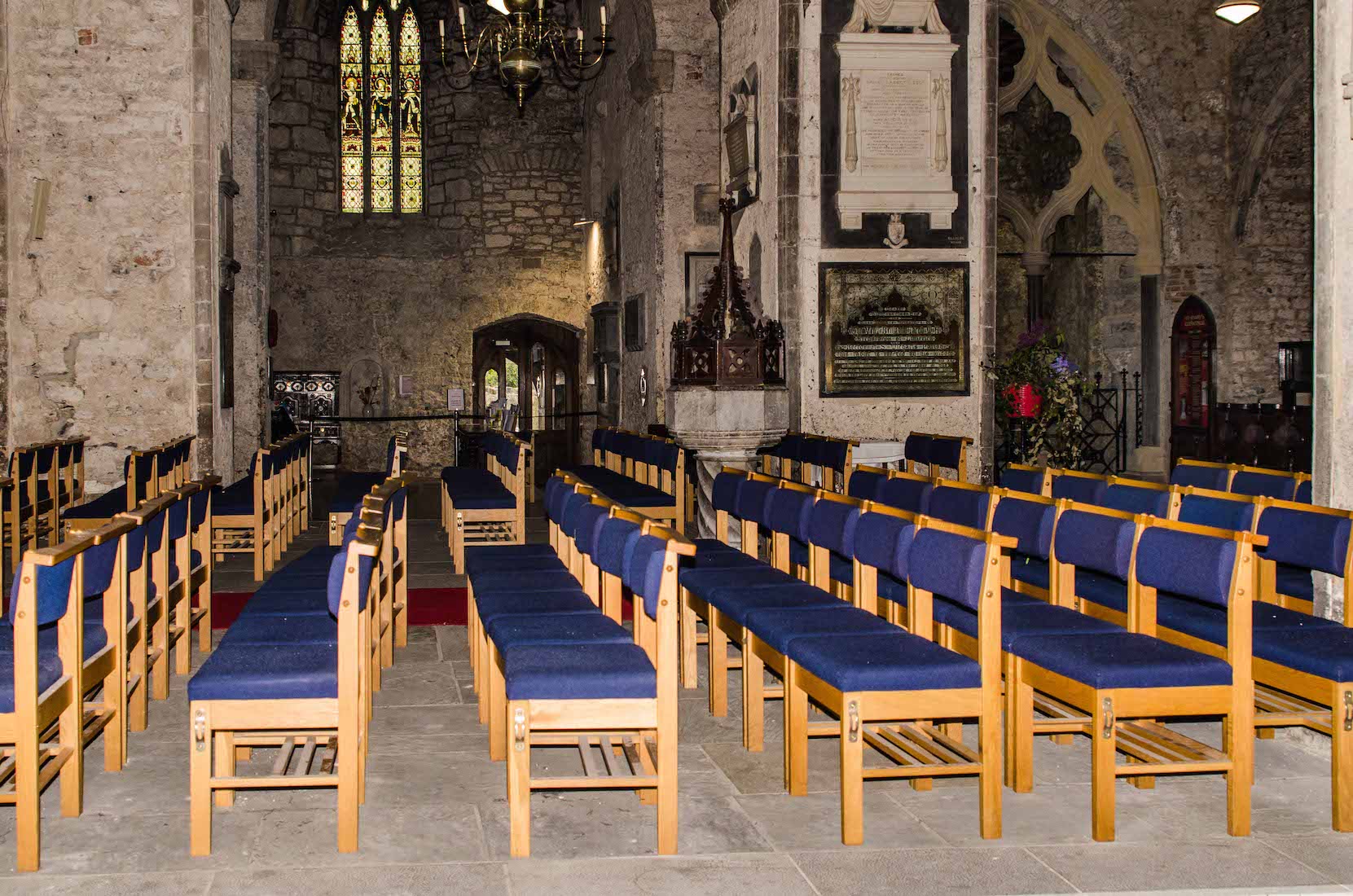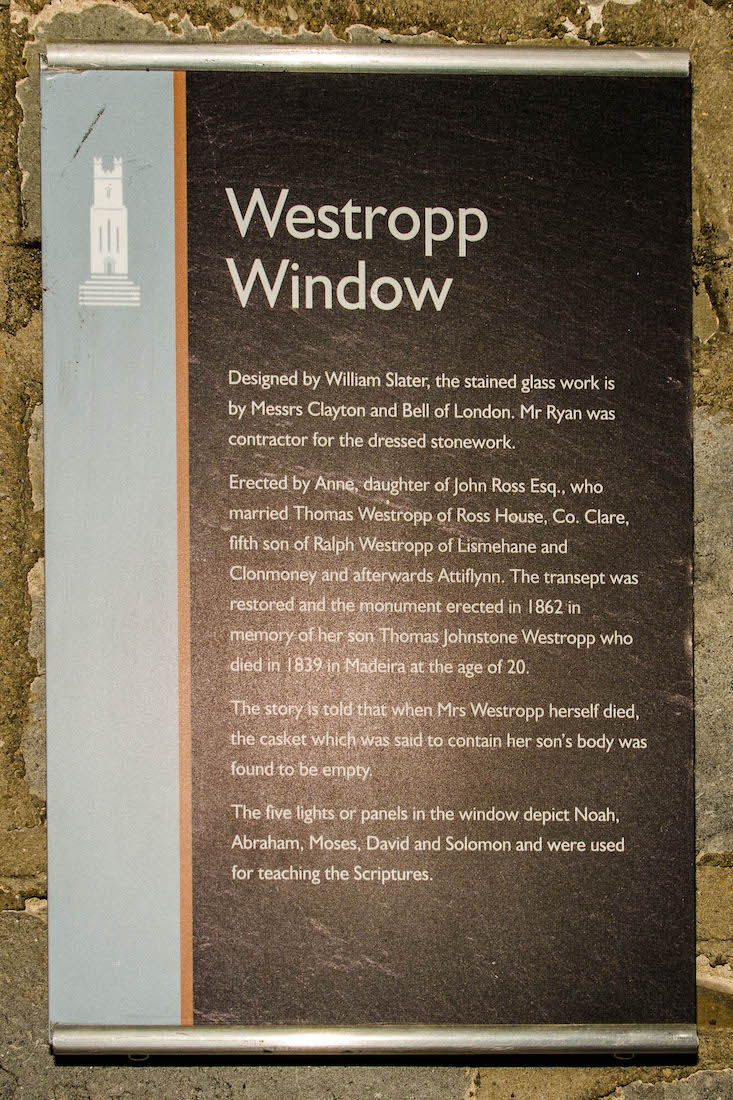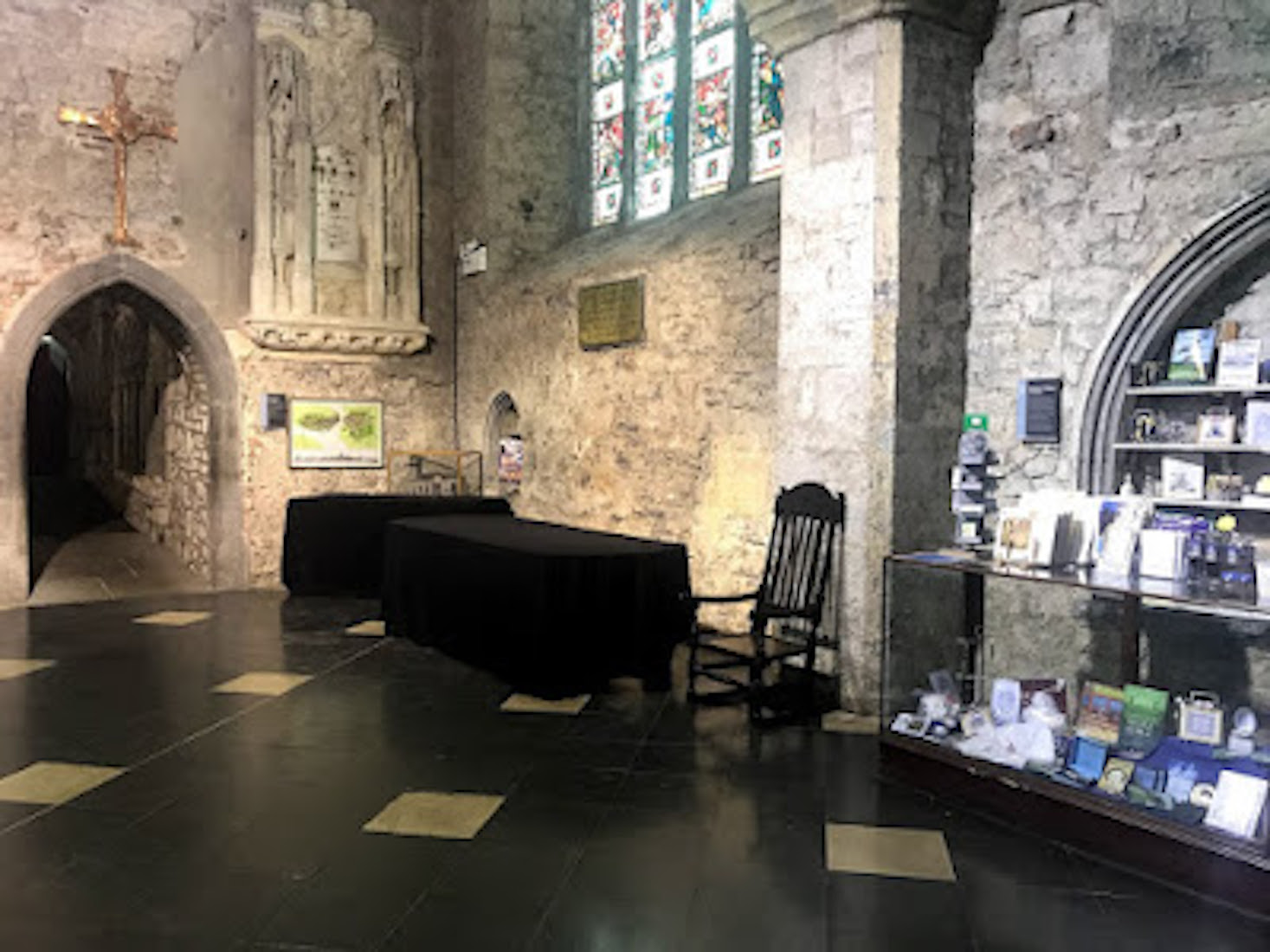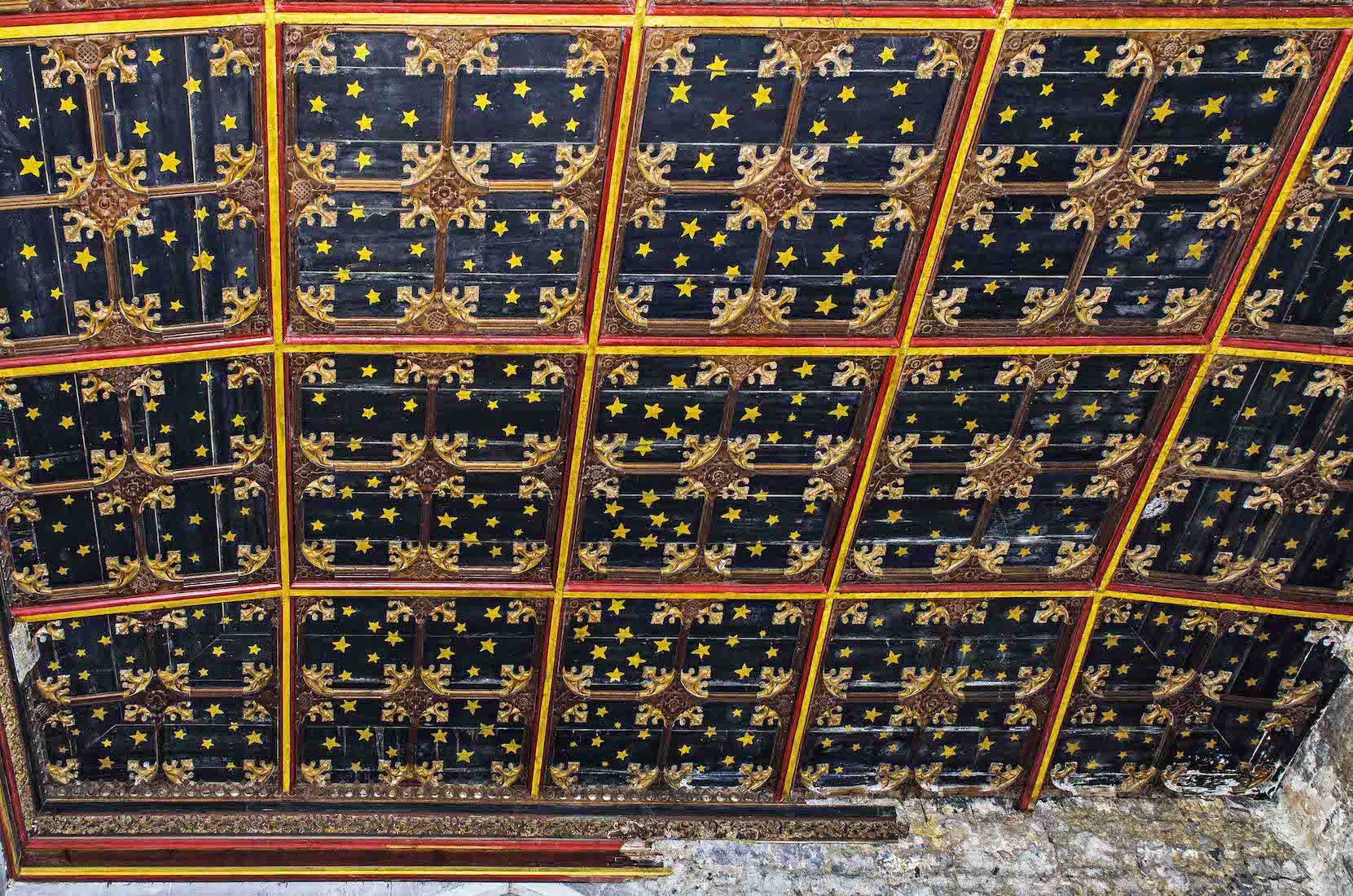61. SOUTH TRANSEPT WINDOW LM LM
This Westropp window by Clayton and Bell, London, dates from ca 1860. The scenes depicted by the window, from bottom to top, are: •• Left Panel: Noah Commanded to Build the Ark; Noah Building the Ark; Noah's Warning; Noah's Entry into the Ark; Flood; Noah and the Dove; Noah Leaving the Ark; Noah Offering Sacrifice; Noah Planting a Vineyard; •• Second Panel: Birth of Abraham; Marriage of Abraham; Calling of Abraham; Abraham Building an Altar; Abraham and Sarah; Abraham Promised a Son; Melchizedek Blessing Abraham; Abraham and the Three Angels; Birth of Isaac; Abraham and Isaac go to Sacrifice; Abraham Sacrificing Isaac; •• Panel 3: Moses in the Bullrushes; Moses Slays the Egyptian; Moses and the Burning Bush; Moses and Aaron Before Pharaoh; Pharoah Drowning in the Red Sea; Moses Striking the Rock; Malek Defeated by the Israelites; Moses on Mount Sinai; Moses and the Tables of the Law; Moses and the Tabernacle; Moses Consecrating Aaron and his Sons; Moses and the Brazen Serpent; Death of Moses; •• Panel 4: Samuel Anointing David; David Playing the Harp to Saul; David and Goliath; Saul Casting the Javelin; Michal Enabling David to Escape; David Sparing the Life of Saul; Shimel Casting Stones at David; Angel Appearing to David; Ark of the Covenant; Nathan Reproving David; Death of David; •• Panel 5 (Right): King Solomon and Hiram; King Solomon Building the Temple; King Solomon's Dream; Judgement of King Solomon; King Solomon Dedicating the Temple; King Solomon's Temple Filled with Glory; Visit of the Queen of Sheba; King Solomon Writing the Proverbs; King Solomon and his Wives Worshipping Idols; Burial of King Solomon. ••• How much time and effort was spent in designing and executing this window! Below the window and to the right are three recesses with trefoil arches. These are the Budstone Sedilia, and were erected by John Budstone who was Bailiff of the city in 1401.
62. SAINT ANNE’S CHAPEL PC
To the immediate West of the South transept is St Anne’s Chapel, was the Sexton Family Chapel, and part of the earlier Consistory Court. A consistory court was a type of ecclesiastical court, especially within the Church of England.
63. CHAPEL WINDOWS WG WG


There are two windows in this chapel. At left is a 1858 window by Clayton and Bell, London, in memory of Barrington. The three horizontal strips illustrate three parables. At bottom is the Parable of the Labourers in theVineyard; at centre the Parable of the Good Samaritan; and at top the Parable of the Talents. •• At right is a 1907 window by Heaton, Butler and Bayne, London in memory of O’Brien. At left it shows Elijah raising the Widow’s Son, and at right Jesus Raising o the Widow’s Son at Nain. PLAN
64. ACROSS TO THE SOUTH DOOR LM WG


There is one more window along this South wall before we arrive at the South door. This view across the nave shows how it is placed. This 1883 window by Heaton, Butler and Bayne, London, remembers Mackern. It is a musical window, and from left to right shows Jubal Playing the organ, King David Playing the Harp (Lyre), and King Solomon.
65. SOUTH AISLE AND BELLS BOARD LM LM
This view looks back down the South aisle – we can see the Westropp Memorial in the South transept. Close by here is an information board about the Cathedral bells. The Cathedral now has a peal of eight bells, as well as a set of mini-bells.
66. ST GEORGE’S CHAPEL LM
There is one final chapel for us to investigate – the St George’s Chapel, or the Glentworth Chapel as it is now called. Its main feature is the tomb of Lord Glentworth, but it also has two stained glass windows, and a lovely ceiling.
67. LORD GLENTWORTH TOMB LM
Edmund Henry Pery, 1st Earl of Limerick PC (1758 – 1844), styled Lord Glentworth between 1794 and 1800, and Viscount Limerick until 1803, was an Irish peer and politician.
68. CHAPEL WINDOWS LM WG
There are two windows in this chapel: one in the North wall, and the other in the west wall. A display board gives us information about these windows. The first window is something of a mystery, because it is not known in whose memory it was erected. The West facing window is in memory of Lord Glentworth’s son.
69. CHAPEL CEILING LM
This chapel has a particularly interesting ceiling.
70. PARTING VIEW LM
This completes our tour of St Mary’s Cathedral, and we return to the back of the nave, recalling our first impression, now enriched by many later discoveries.

CONCLUSION LM
It has been a great pleasure exploring this old Cathedral of St Mary in Limerick. I hope you have enjoyed visiting it with me.
I am happy to receive constructive comments or corrections concerning this website. The best websites are the ones which have no errors! I am grateful to my wife Margie who has proof-read these pages.
As mentioned in the introduction, the photographs used here come from a variety of sources. Most are provided by Le Monde1 [LM], and taken from his Flickr Album ‘Ireland - 2019’:
https://www.flickr.com/photos/31068574@N05/albums/72157708763940012/
Quite a few are from Google Street View [GSV]. Most window photos are from Gloine (Wikipedia) [WG], and can be found at:
https://www.gloine.ie/search/window/14895/W21
Some photos are from Cathedral sources [SMC]. Patrick Comerford [PC] has made a valuable contribution: I have tried unsuccessfully to contact him, but believe he would give me permission! Occasional other photos are accredited within the text. The lovely Title Page photograph comes from Discover Ireland [DI], from whom I have sought permission, but have had no response.
I am grateful to all of these people who have made their photographs freely available, and who have thus enabled the production of this website.
As usual I make no claim for originality of the text which has been drawn from many sources. These include Wikipedia, the excellent Cathedral booklet at:
St Mary’s Cathedral in Limerick has its own website:
https://www.saintmaryscathedral.ie
Site created 03 / 2024
Paul Scott












